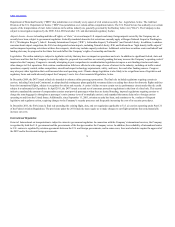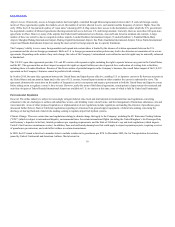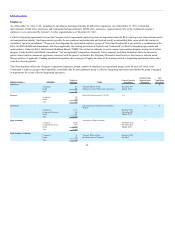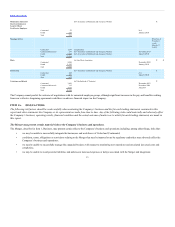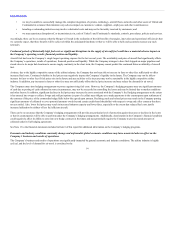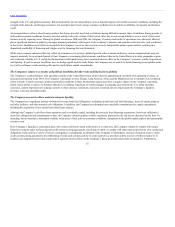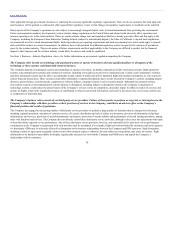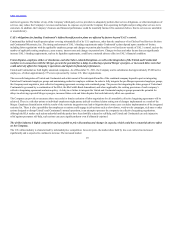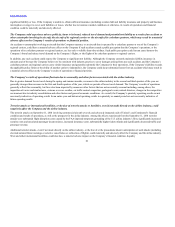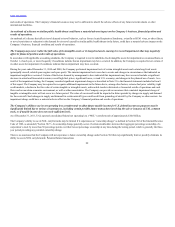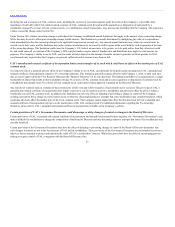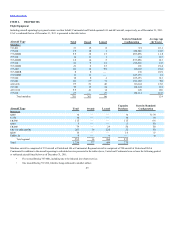United Airlines 2011 Annual Report Download - page 20
Download and view the complete annual report
Please find page 20 of the 2011 United Airlines annual report below. You can navigate through the pages in the report by either clicking on the pages listed below, or by using the keyword search tool below to find specific information within the annual report.
Table of Contents
and travel agencies. The failure of any of the Company’s third-party service providers to adequately perform their service obligations, or other interruptions of
services, may reduce the Company’s revenues and increase its expenses or prevent the Company from operating its flights and providing other services to its
customers. In addition, the Company’s business and financial performance could be materially harmed if its customers believe that its services are unreliable
or unsatisfactory.
UAL’s obligations for funding Continental’s defined benefit pension plans are affected by factors beyond UAL’s control.
Continental has defined benefit pension plans covering substantially all of its U.S. employees, other than the employees of its Chelsea Food Services division
and Continental Micronesia, Inc. The timing and amount of UAL’s funding requirements under Continental’s plans depend upon a number of factors,
including labor negotiations with the applicable employee groups and changes to pension plan benefits as well as factors outside of UAL’s control, such as the
number of applicable retiring employees, asset returns, interest rates and changes in pension laws. Changes to these and other factors that can significantly
increase UAL’s funding requirements, such as its liquidity requirements, could have a material adverse effect on UAL’s financial condition.
Union disputes, employee strikes or slowdowns, and other labor-related disruptions, as well as the integration of the United and Continental
workforces in connection with the Merger, present the potential for a delay in achieving expected Merger synergies, or increased labor costs that
could adversely affect the Company’s operations and impair its financial performance.
United and Continental are both highly unionized companies. As of December 31, 2011, the Company and its subsidiaries had approximately 87,000 active
employees, of whom approximately 72% were represented by various U.S. labor organizations.
The successful integration of United and Continental and achievement of the anticipated benefits of the combined company depend in part on integrating
United and Continental employee groups and maintaining productive employee relations. In order to fully integrate the pre-Merger represented employee groups,
the Company must negotiate a joint collective bargaining agreement covering each combined group. The process for integrating the labor groups of United and
Continental is governed by a combination of the RLA, the McCaskill-Bond Amendment, and where applicable, the existing provisions of each company’s
collective bargaining agreements and union policy. A delay in or failure to integrate the United and Continental employee groups presents the potential for
delays in achieving expected Merger synergies, increased labor costs and labor disputes that could adversely affect our operations.
The Company can provide no assurance that a successful or timely resolution of labor negotiations for all amendable collective bargaining agreements will be
achieved. There is a risk that unions or individual employees might pursue judicial or arbitral claims arising out of changes implemented as a result of the
Merger. Employee dissatisfaction with the results of the seniority integration may lead to litigation that in some cases can delay implementation of the integrated
seniority list. There is also a possibility that employees or unions could engage in job actions such as slow-downs, work-to-rule campaigns, sick-outs or other
actions designed to disrupt United’s and Continental’s normal operations, in an attempt to pressure the companies in collective bargaining negotiations.
Although the RLA makes such actions unlawful until the parties have been lawfully released to self-help, and United and Continental can seek injunctive
relief against premature self-help, such actions can cause significant harm even if ultimately enjoined.
The airline industry is highly competitive and susceptible to price discounting and changes in capacity, which could have a material adverse effect
on the Company.
The U.S. airline industry is characterized by substantial price competition. In recent years, the market share held by low-cost carriers has increased
significantly and is expected to continue to increase. The increased market
19


